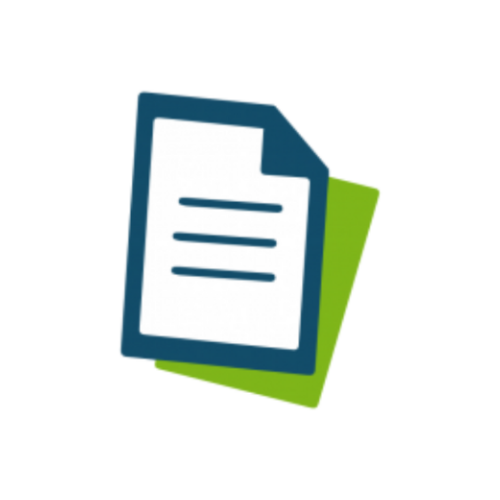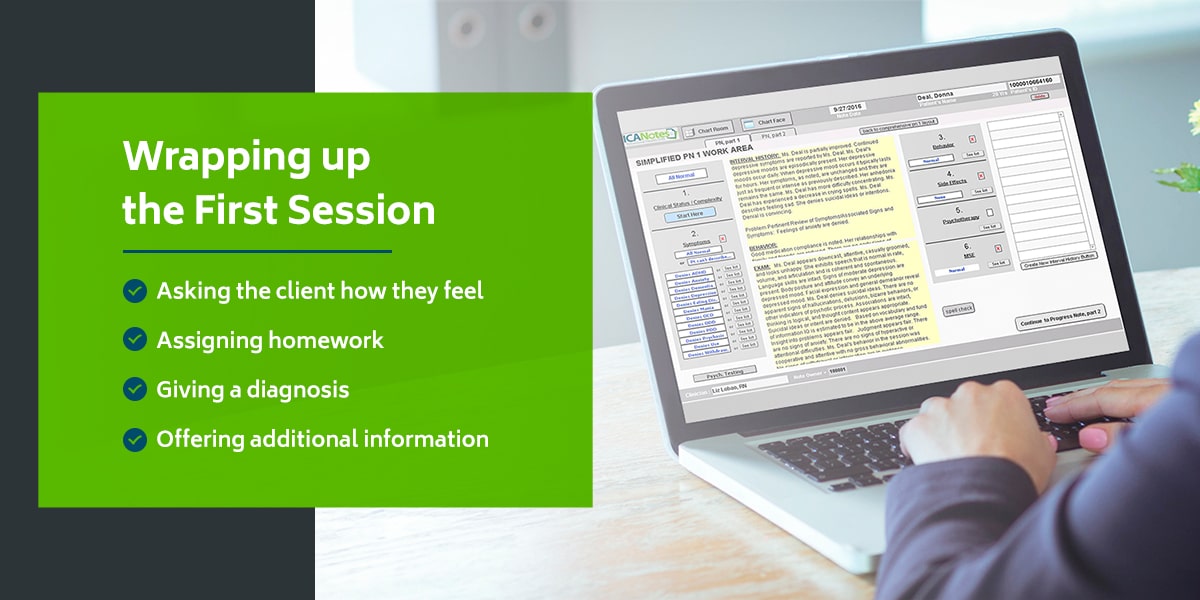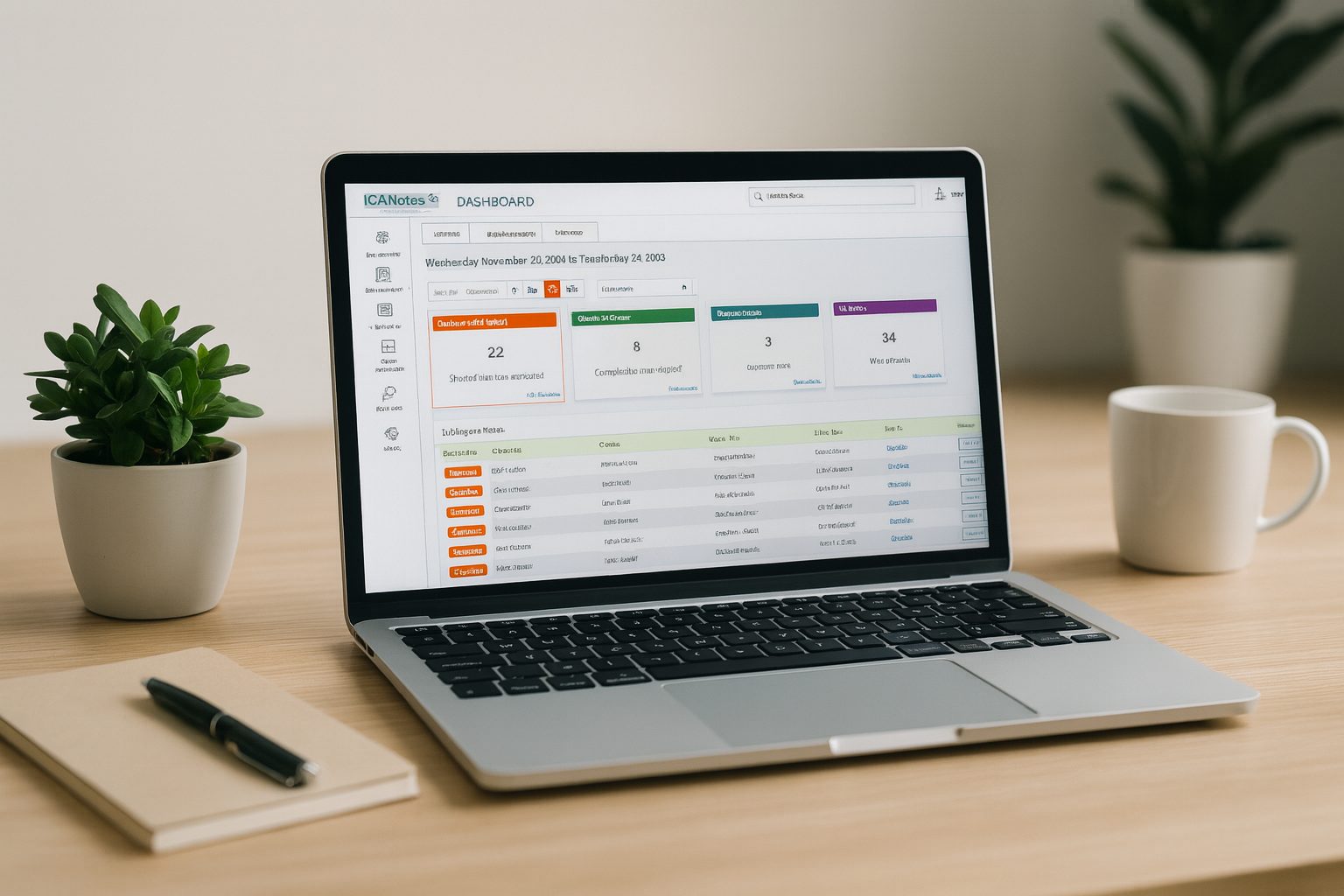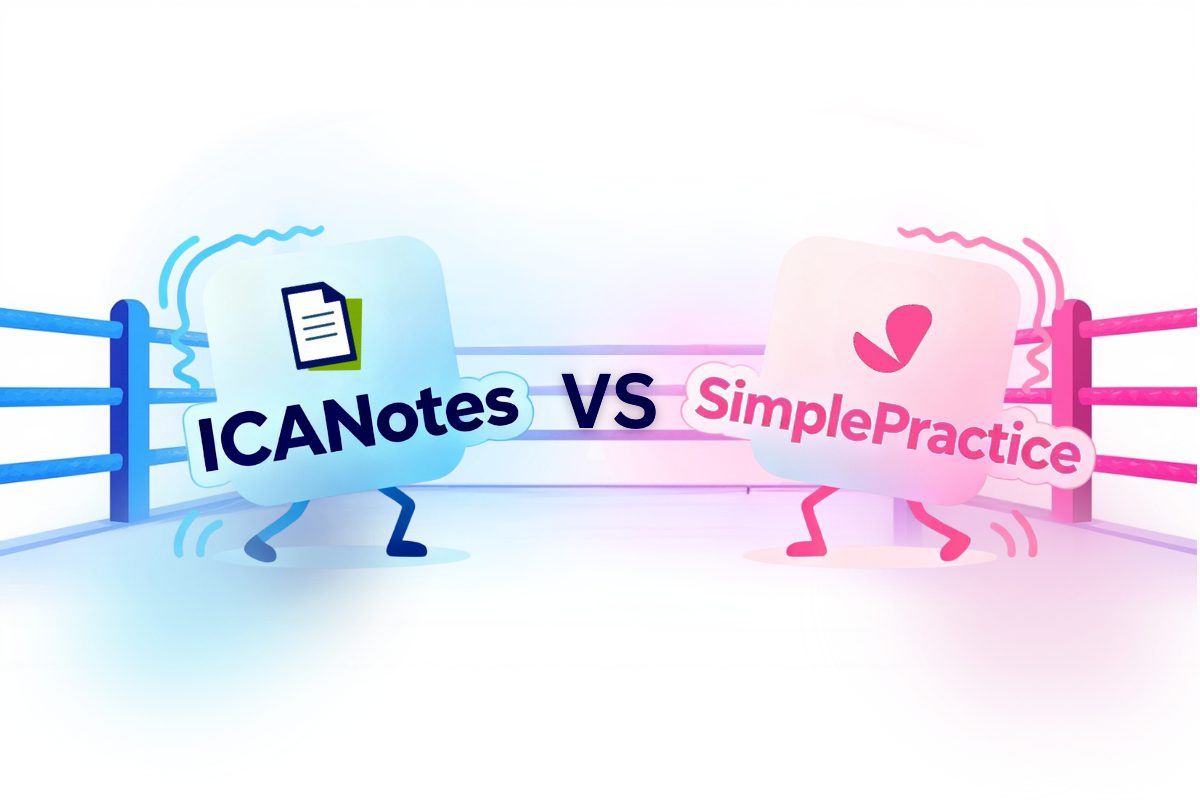Blog > Practice Management > Effective Therapy Intake for Mental Health and Psychiatry Providers
Effective Therapy Intake: A Guide to Successful Mental Health, Counseling & Psychiatry Intake
The therapy intake session sets the tone for your entire clinical relationship. Whether you're conducting a mental health intake for therapy, a counseling intake to explore emotional challenges, or a psychiatry intake to assess medication needs, your first session is a critical opportunity to build trust, gather essential information, and establish a treatment roadmap. In this guide, we’ll walk through best practices for conducting a thorough and compassionate intake—one that helps you understand your client’s needs while laying the foundation for effective care.

Last Updated: August 15, 2025


What You'll Learn
-
How to prepare for a therapy intake to build trust and gather meaningful information from the start.
-
Key questions to ask—and what to observe—during mental health, counseling, and psychiatry intakes.
-
Common intake mistakes to avoid and strategies for creating a supportive environment.
-
Best practices for documenting your intake to ensure compliance and continuity of care.
What is a Therapy Intake?
A therapy intake is the initial appointment between a mental health provider and a new client. It serves as the foundation for building a therapeutic relationship and gathering essential clinical information. The goal is to understand why the client is seeking help, assess their current mental health status, and begin formulating an appropriate treatment plan.
In a mental health intake, clinicians typically explore presenting concerns, personal and family history, medical background, and psychosocial factors. This session often includes a mental status exam (MSE) to evaluate mood, affect, thought processes, orientation, and other cognitive functions.
A counseling intake may place more emphasis on emotional experiences, relationship dynamics, and personal goals. It also gives the therapist a chance to introduce their therapeutic approach and begin building rapport.
For clients pursuing psychiatric care, the psychiatry intake includes additional focus on diagnostic clarification, medication history, and potential treatment with psychopharmacology. Psychiatrists or psychiatric nurse practitioners often use this session to determine whether medication, therapy, or a combination is most appropriate.
Regardless of discipline, the intake process is not just about collecting data—it’s about creating a safe, supportive space where clients feel heard and respected. A well-executed intake sets the tone for all future sessions and helps ensure clinical effectiveness, risk mitigation, and regulatory compliance.

Preparing for the Intake Session
Laying the groundwork before a therapy intake session helps set the tone for a smoother, more productive experience—for both you and your client. A well-prepared mental health intake shows professionalism, builds trust, and creates space for deeper connection and insight once the session begins.
Below are key preparation steps to take before the appointment:
Organize Intake Paperwork in Advance
Therapy, counseling, and psychiatry intake sessions require a variety of forms, including informed consent, HIPAA privacy notices, screening tools, and medical or mental health history questionnaires. Preparing this paperwork ahead of time ensures the session starts on time and with fewer disruptions.
Many mental health providers also include a personalized welcome letter that introduces their therapeutic approach, credentials, practice policies, and contact information. If you use an EHR with a secure patient portal, consider sending these documents electronically for clients to complete prior to the appointment. This not only streamlines the intake process but also helps clients feel more prepared.
Review the Client’s Background Information
Before the intake appointment, take time to review any available background information. This may include prior medical or psychiatric records, intake forms submitted through your portal, or details included in the client’s appointment request.
Gaining context in advance can help you approach the counseling intake session with empathy and direction, especially if the client is reluctant to open up. If you're working within a psychiatry intake, having a clear picture of past diagnoses or medications can also guide more efficient evaluation.
Prepare Thoughtful Intake Questions
While some clients will come in ready to talk, others may need gentle prompting. Having a list of thoughtful, open-ended questions ready can make a big difference. Cover essential areas such as:
-
Presenting symptoms and duration
-
Triggers or stressors
-
Safety concerns (e.g., self-harm or suicidal ideation)
-
Client goals for therapy or treatment
-
Relevant items from their intake form
Whether you’re conducting a mental health, counseling, or psychiatry intake, these questions help ensure you collect clinically meaningful information while building rapport from the very first session.
Mental Health Intake: What to Ask and Observe
Once your client arrives, the mental health intake officially begins. This session is your opportunity to gather clinical insights, observe client behavior, and begin building a therapeutic alliance. Whether you're conducting a therapy intake for general mental health concerns or a more targeted counseling intake, the questions you ask, and the way you listen, set the stage for effective care.
Ask Open-Ended Questions
The most effective intakes strike a balance between structured inquiry and empathetic conversation. Start with open-ended questions that invite clients to share their experiences in their own words. For example:
-
"Can you tell me what brought you in today?"
-
"What kinds of things have you been struggling with lately?"
-
"How are these challenges affecting your daily life?"
These types of questions help you learn about the client’s concerns without overwhelming them during the first visit. Letting them speak freely can also ease anxiety and help them feel more comfortable opening up.
Assess Symptom Patterns and Risk
As the session progresses, transition into more targeted questions about symptoms, duration, and impact. Explore areas such as:
-
Mood, anxiety, or trauma-related symptoms
-
Sleep and appetite changes
-
Concentration and energy levels
-
Substance use history
-
Experiences of loss or grief
It’s also critical to assess risk factors during the intake. Ask whether the client has experienced thoughts of self-harm or suicidal ideation. Depending on their response, follow up with more detailed safety assessments and create a safety plan if necessary.
Observe Client Behavior and Affect
Beyond verbal responses, pay close attention to nonverbal cues. A mental health intake offers a unique opportunity to assess the client's presentation, including:
-
Mood and affect (Are they congruent?)
-
Speech patterns (Paced? Pressured? Hesitant?)
-
Eye contact and body language
-
Orientation to person, place, and time
These observations often form the basis of the mental status exam (MSE) and contribute to diagnostic impressions and treatment planning. Note any discrepancies between what the client says and how they present.
Discuss Client Goals
Toward the end of the intake, explore what the client hopes to achieve through therapy, counseling, or psychiatry. Understanding their goals helps align your clinical approach and sets expectations for future sessions.
You might ask:
-
"What would you like to get out of therapy?"
-
"Are there changes you’re hoping to see in your life or relationships?"
-
"Have you worked with a therapist, counselor, or psychiatrist before? What was that like?"
Clarifying these goals helps you create a collaborative treatment plan and shows clients you're invested in their progress from the very beginning.
Streamline your Intakes with this powerful form!
Download our Fillable Biopsychosocial Intake Form
Whether you're onboarding new clients or updating charts, this form helps you gather everything you need in one place.
Counseling Intake Considerations
A counseling intake is more than a clinical information-gathering exercise, it’s the first step in forming a therapeutic alliance. While it shares structural elements with other types of mental health intake sessions, counseling intakes often place greater emphasis on the emotional experience of the client, rapport-building, and collaborative goal setting.
Here are key considerations when conducting a counseling-focused therapy intake:
Prioritize Emotional Safety
For many clients, the counseling intake may be their first time talking openly about painful or deeply personal issues. Creating a safe, supportive environment is essential. Use affirming language, nonjudgmental listening, and empathetic body language to build trust early.
Many counselors open the session with a warm acknowledgment, such as:
“I know the first session can feel a little intimidating. I really appreciate you being here and sharing what you’re comfortable with at your own pace.”
This helps ease anxiety and sets a collaborative tone.
Explore Psychosocial Context
A comprehensive counseling intake should cover more than symptom checklists, it should explore the client’s environment and support system. Consider asking about:
-
Current relationships and family dynamics
-
Social supports and sources of stress
-
Cultural, spiritual, or community affiliations
-
Work, school, or caregiving responsibilities
These insights are critical for tailoring your therapeutic approach and identifying potential barriers to treatment.
Assess Readiness and Motivation
Understanding where your client stands in terms of readiness for change can guide your treatment plan and help you match interventions appropriately. Motivational interviewing techniques, such as asking what prompted them to seek help now, can yield meaningful responses and uncover internal motivations.
Ask questions like:
-
“What led you to consider counseling at this time?”
-
“What changes would you like to see in your life?”
-
“Have you tried anything in the past that helped?”
These responses can help shape a collaborative treatment plan and give insight into the client’s coping strategies and resilience.
Acknowledge Past Counseling Experiences
If the client has participated in therapy before, take time to understand what worked and what didn’t. This helps you avoid repeating unhelpful patterns and lets the client feel heard.
Sample prompts include:
-
“Have you worked with a therapist or counselor before?”
-
“What was helpful or unhelpful about that experience?”
-
“Is there anything you’d like to do differently this time?”
Tailoring the counseling intake to the individual promotes client autonomy and fosters stronger engagement in the therapeutic process.
What to Cover in a Psychiatry Intake
A psychiatry intake is a specialized form of mental health intake that focuses on both the psychological and biological factors influencing a client’s well-being. While it shares core elements with a general therapy intake, psychiatry intakes also require a deeper exploration of medical history, diagnostic clarification, and potential treatment with psychopharmacology.
Here are the essential areas to address during a psychiatry intake:
Comprehensive Medical and Psychiatric History
Begin by reviewing the client’s past and current diagnoses, any hospitalizations, and significant psychiatric events. Explore their medication history in detail, including:
-
Current medications, dosages, and adherence
-
Past psychiatric medications and reasons for discontinuation
-
Side effects experienced and tolerability
-
Known drug allergies or interactions
This information provides the foundation for safe prescribing and helps identify patterns in medication response.
Diagnostic Assessment
A psychiatry intake often includes a more structured diagnostic evaluation than a counseling intake. This may involve:
-
Detailed symptom exploration (onset, severity, triggers)
-
Use of standardized screening tools
-
Assessment of co-occurring mental health and medical conditions
-
Differentiation between psychiatric and medical causes of symptoms
Your assessment should also include a mental status exam (MSE) to evaluate cognitive functioning, affect, thought processes, and insight.
Substance Use and Lifestyle Factors
Because medication effectiveness and safety can be affected by lifestyle habits, discuss:
-
Substance use (alcohol, recreational drugs, nicotine)
-
Caffeine intake
-
Sleep hygiene
-
Nutrition and exercise patterns
These factors can influence medication metabolism, symptom presentation, and overall treatment success.
Risk Assessment
As with any mental health intake, it’s essential to evaluate safety concerns, including:
-
Suicidal ideation or self-harm behaviors
-
Risk of harm to others
-
Access to means (e.g., firearms, medications)
If risk factors are identified, create a clear safety plan and document it thoroughly.
Treatment Planning and Education
Conclude the psychiatry intake by discussing treatment options. This may include:
-
Initiating or adjusting medication
-
Recommending psychotherapy or counseling
-
Suggesting lab work or physical exams to rule out medical causes
-
Providing psychoeducation about diagnosis, prognosis, and medication use
Encourage client questions and collaboration in the decision-making process to promote adherence and trust.
Common Intake Pitfalls to Avoid
Whether you’re conducting a therapy intake, a mental health intake, a counseling intake, or a psychiatry intake, the first session sets the tone for your client’s entire treatment experience. Even skilled clinicians can fall into habits that reduce the effectiveness of the intake process. Being aware of these common pitfalls, and taking steps to avoid them, can help you start every client relationship on the right foot.
1. Rushing Through the Process
The intake is not just a formality, it’s the foundation of your clinical work. Moving too quickly can leave clients feeling unheard and can cause you to miss important information about symptoms, history, or risk factors. Allow enough time for clients to share their story and for you to ask follow-up questions.
2. Over-Reliance on Forms and Checklists
While intake forms, consent documents, and screening tools are essential, relying solely on paperwork can make the session feel impersonal. Use these tools as a guide, but prioritize active listening and conversational rapport-building.
3. Using Overly Clinical or Technical Language
Clients may be unfamiliar with clinical terminology, especially during a first session when they may already feel anxious. Strive to explain terms and processes in plain language. This is especially important in psychiatry intakes, where medication and diagnostic discussions can quickly become complex.
4. Skipping Risk Assessment Questions
Even if the client appears stable, you should never skip questions about self-harm, suicidal ideation, or other safety concerns. Failing to address these can put both the client and clinician at risk. Risk assessment is a critical part of every mental health intake, regardless of the presenting issue.
5. Neglecting to Explore Client Goals
An intake that focuses only on symptoms and history, without exploring what the client hopes to gain from treatment, can make therapy feel disconnected from their personal needs. Discussing goals early helps align your treatment plan with the client’s expectations.
6. Not Documenting Thoroughly
Accurate and complete documentation isn’t just about compliance—it ensures continuity of care, supports collaboration with other providers, and protects you legally. Whether you’re conducting a counseling intake or a psychiatry intake, note key observations, client statements, and your clinical impressions.
Tips for Creating a Supportive Intake Environment
A well-run therapy intake isn’t just about collecting information—it’s about setting the tone for a safe, trusting, and collaborative therapeutic relationship. Whether you’re conducting a mental health intake, counseling intake, or psychiatry intake, the environment you create plays a powerful role in how open and comfortable clients will feel during your first meeting.
1. Start with Warm, Welcoming Communication
Begin the session by greeting the client warmly and expressing appreciation for their willingness to meet. A simple acknowledgment, such as, “I’m glad you’re here today, and I want you to feel free to share at your own pace,” can help reduce anxiety and establish rapport.
2. Set Clear Expectations
Clients often feel more comfortable when they know what to expect from the intake process. Outline the session structure, explain the purpose of your questions, and clarify how the information will be used. In psychiatry intakes, this may include describing the role of medication evaluation alongside therapeutic support.
3. Create a Comfortable Physical or Virtual Space
If meeting in person, ensure the environment is quiet, private, and free from distractions. If the intake is conducted via telehealth, test your technology in advance and encourage the client to choose a private, comfortable space for the session.
4. Demonstrate Cultural Humility
Clients bring unique cultural, religious, and personal values into the therapy room. Show respect and openness to their perspectives. Incorporating culturally sensitive language during the mental health intake can enhance trust and improve treatment engagement.
5. Balance Structure with Flexibility
While it’s important to cover essential clinical topics, be ready to adapt your approach if the client brings up something significant. Flexibility allows for deeper connection and signals that you value the client’s input as much as your own clinical agenda.
6. Affirm Strengths and Resilience
During the counseling intake, take time to recognize and affirm the strengths the client has already demonstrated, whether it’s seeking help, using coping strategies, or maintaining supportive relationships. Positive reinforcement can boost client confidence and engagement from the very first session.
Documenting the Intake: Clinical and Compliance Considerations
Accurate, thorough documentation is a critical part of every therapy intake, whether you’re conducting a mental health intake, counseling intake, or psychiatry intake. Beyond keeping a record of client information, well-documented intake notes ensure continuity of care, support insurance reimbursement, and protect you in the event of audits or legal inquiries.
1. Capture All Required Clinical Elements
Your intake documentation should include:
-
Client demographic information and contact details
-
Presenting concerns and history of the problem
-
Medical, psychiatric, and psychosocial history
-
Current medications, allergies, and prior treatments
-
Observations from the mental status exam (MSE)
-
Risk assessments (suicidality, self-harm, harm to others)
-
Client treatment goals and agreed-upon next steps
Completing these sections in detail not only meets clinical standards but also supports compliance with payer requirements and professional ethics.
2. Document in Real Time When Possible
Recording intake details promptly, ideally during or immediately after the session, helps ensure accuracy and completeness. Waiting too long increases the risk of omitting important client statements, observations, or your own clinical impressions. Using a specialty-specific behavioral health EHR like ICANotes can help you document in real time, and significantly reduces the time spent on documentation without compromising quality.
3. Maintain Compliance with Privacy Regulations
All intake documentation must comply with HIPAA and, if applicable, 42 CFR Part 2 confidentiality rules for substance use treatment. This includes securely storing electronic health records and limiting access to authorized personnel.
4. Leverage Your EHR for Efficiency
Using an EHR with behavioral health–specific intake templates can streamline the process, reduce administrative burden, and improve note quality. For example, ICANotes offers structured intake templates that prompt for all required clinical elements while allowing you to personalize the note for each client. Secure patient portal features can also collect intake forms ahead of time, saving valuable session time for meaningful discussion. In ICANotes, the client enters all of the intake information via the portal prior to the intake session, and the data automatically pulls into the initial assessment for review and editing by the clinician.
5. Support Collaboration and Care Coordination
Intake notes are often shared, either in full or in summary, with other members of a client’s care team. Writing clear, concise, and well-organized documentation ensures that other providers can quickly understand your findings, diagnoses, and recommendations.

Next Steps After the Intake
A well-executed therapy intake lays the foundation for effective treatment, but what happens after the first session is just as important. Whether you’ve conducted a mental health intake, counseling intake, or psychiatry intake, your next steps should solidify the therapeutic relationship and keep the client engaged in their care.
1. Develop a Collaborative Treatment Plan
Using the information gathered during the intake, work with the client to outline short-term and long-term goals. Ensure the plan reflects their priorities as well as your clinical recommendations. In psychiatry intakes, this may also include medication management steps and follow-up schedules.
2. Schedule Follow-Up Appointments Promptly
Before the client leaves, confirm the date and time of the next session. Early scheduling reinforces commitment, maintains momentum, and reduces the risk of no-shows.
3. Provide Educational Resources
Offer handouts, reading materials, or reputable online resources that relate to the client’s presenting concerns. This supports psychoeducation, empowers clients between sessions, and can reinforce treatment adherence.
4. Coordinate with Other Providers When Needed
If the client’s care will involve multiple providers—such as a psychiatrist, primary care physician, or case manager—secure the appropriate releases of information and establish communication channels early in the process.
5. Document Next Steps Clearly
Record all agreed-upon actions, treatment goals, and follow-up plans in the client’s record. Clear documentation ensures continuity of care and compliance with professional standards.
Frequently Asked Questions
The right tools can make every intake smoother, more compliant, and more clinically useful.
With ICANotes, you can complete thorough intake documentation faster using structured templates designed specifically for behavioral health. Our secure patient portal streamlines paperwork collection before the first session, so you can focus on what matters most—building trust and setting the stage for positive outcomes.
Request a free trial of ICANotes to see how our platform can help you improve your intake process and overall client care.
Start Your 30-Day Free Trial
Experience the most intuitive, clinically robust EHR designed for behavioral health professionals, built to streamline documentation, improve compliance, and enhance patient care.
- Complete Notes in Minutes - Purpose-built for behavioral health charting
- Always Audit-Ready – Structured documentation that meets payer requirements
- Keep Your Schedule Full – Automated reminders reduce costly no-shows
- Engage Clients Seamlessly – Secure portal for forms, messages, and payments
- HIPAA-Compliant Telehealth built into your workflow
Complete Notes in Minutes – Purpose-built for behavioral health charting
Always Audit-Ready – Structured documentation that meets payer requirements
Keep Your Schedule Full – Automated reminders reduce costly no-shows
Engage Clients Seamlessly – Secure portal for forms, messages, and payments
HIPAA-Compliant Telehealth built into your workflow
Dr. October Boyles is a behavioral health expert and clinical leader with extensive expertise in nursing, compliance, and healthcare operations. With a Doctor of Nursing Practice (DNP) and advanced degrees in nursing, she specializes in evidence-based practices, EHR optimization, and improving outcomes in behavioral health settings. Dr. Boyles is passionate about empowering clinicians with the tools and strategies needed to deliver high-quality, patient-centered care.









